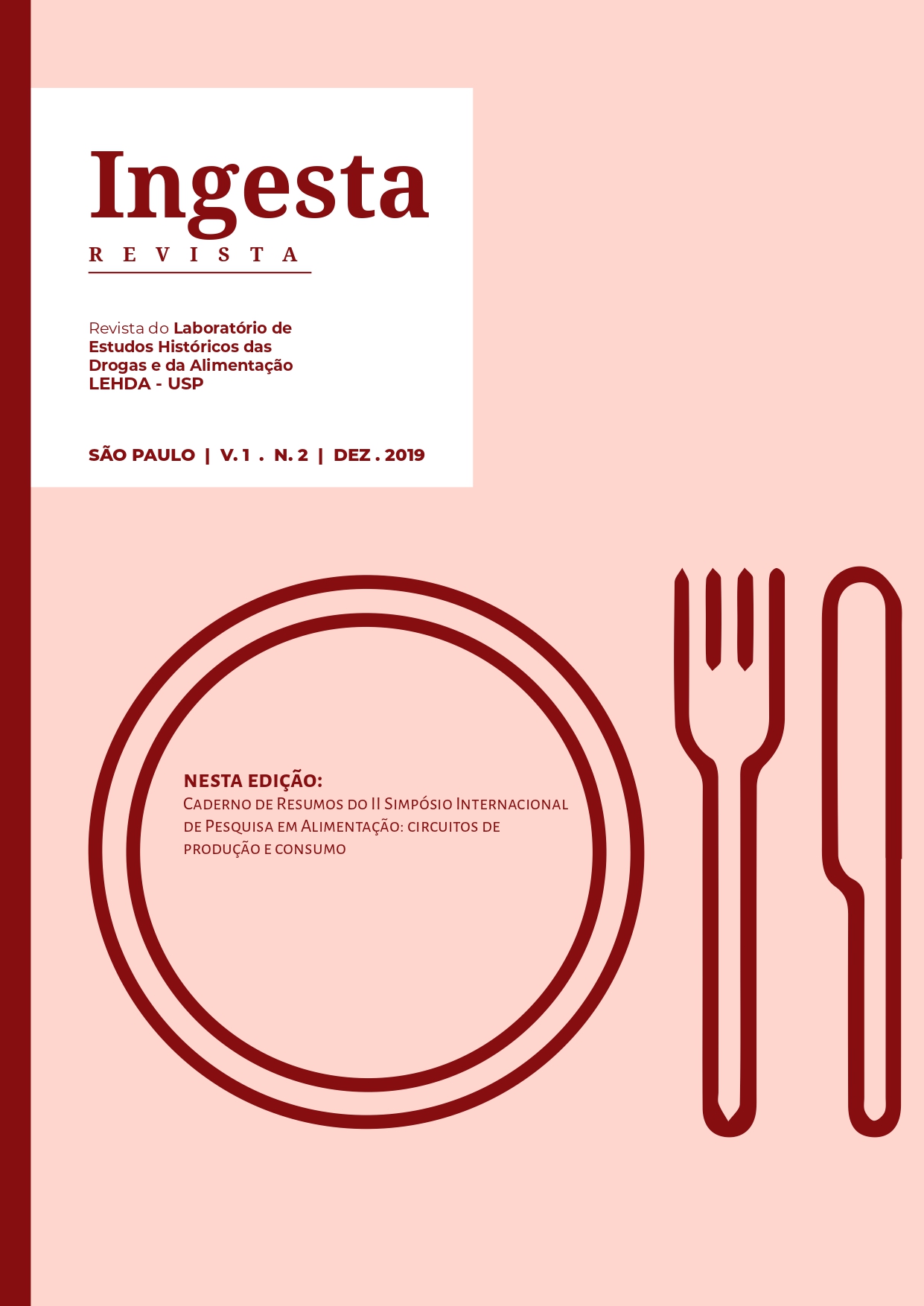Iansã's acará at the Saint Barbara festival
brief considerations on the foods of a popular religious festival in Salvador, Brazil
DOI:
https://doi.org/10.11606/issn.2596-3147.v1i2p26-37Keywords:
Acará, Caruru, Saint Barbara, Salvador, BrazilAbstract
This article approaches the eating habits at the centenary festival of Saint Barbara, which takes place annually in Salvador, Brazil, on December 4th. In addition to addressing the traditional caruru offered in honor of the saint, the text aims to highlight the presence of the acará in the celebrations. Thanks to the Afro-Diasporic influence, the white-European original devotion gained elements of African origins when arriving in the Bahian capital, and palm oil- based foods are undisputed proof. And even though Afro-Catholic syncretism has brought Saint Barbara closer to the Iansã orixá, the deities are revered with different foods. In clarifying this apparent divergence, the work demonstrates the importance of acarajé at the December 4th festival and the African heritage of celebrating with food. To assist in the discussion about popular parties in Salvador, Afro-Bahian cuisine and religious syncretism, the text dialogued with authors such as Edilece Couto (2015), Manuel Querino (2006) and Pierre Verger (1999). Based on literature review, journal research and participant observation, the article highlights the relevance of commensality in the popular religious festival that began in the 17th century and remains alive today. Thus, the text shows how certain foods were consolidated as constitutive elements of the Saint Barbara festival in Salvador.
Downloads
References
COUTO, Edilece. Festa de Santa Bárbara e Iansã: os baianos entre fronteiras tênues e complementação de
crenças. Revista Brasileira de História das Religiões, ANPUH, ano XI, n. 31, 2018, pp. 203-219.
FERREIRA FILHO, Alberto Heráclito. Quem pariu e bateu que balance! Mundos femininos, maternidade e pobreza em Salvador, 1890-1940. Salvador: CEB, 2003.
FREYRE, Gilberto. Casa grande & senzala: formação da família brasileira sob o regime da economia
patriarcal. 51a ed. rev. São Paulo: Global, 2006.
PRANDI, Reginaldo. Mitologia dos orixás. São Paulo: Companhia das Letras, 2001.
PIERSON, Donald. Brancos e prêtos na Bahia: estudo de contacto racial. 2a edição. São Paulo:
Nacional, 1971.
QUERINO, Manuel. A arte culinária na Bahia. Salvador: P555 Edições, 2006.
RODRIGUES, Nina. O animismo fetichista dos negros baianos. 2 ed. Salvador: P55 Edições, 2014.
(Coleção Autoconhecimento Brasil).
SANTOS, Vagner José Rocha. O sincretismo na culinária afro-baiana: o acarajé das filhas de Iansã
e das filhas de Jesus. Dissertação (Mestrado em Cultura e Sociedade) – Universidade Federal da
Bahia. Salvador, 2013.
SOARES, Cecília. Mulher negra na Bahia no século XIX. Dissertação (História) – Universidade Federal da Bahia. Salvador, 1994.
VERGER, Pierre. Notícias da Bahia de 1850. Tradução Maria Aparecida da Nóbrega. 2a ed. Salvador:
Corrupio, 1999.
VIANNA, Hildegardes. Calendário de festas populares da cidade do Salvador. Salvador: Prefeitura
Municipal, 1983.
Downloads
Published
Issue
Section
License
1. Authors retain the copyright and grant the journal the right of first publication, with the work simultaneously licensed under the Creative Commons Attribution License which allows the sharing of work with acknowledgment of authorship and initial publication in this journal.
2. Authors are authorized to take additional contracts separately, for non-exclusive distribution of the version of the work published in this journal (eg. publish in institutional repository or as a book chapter), with acknowledgment of authorship and initial publication in this journal.
3. Authors are allowed and encouraged to publish and distribute their work online (eg. in institutional repositories or on their personal page) at any point before or during the editorial process, as this can generate productive changes as well as increase the impact and the citation of the published work (See The Effect of Free Access).


